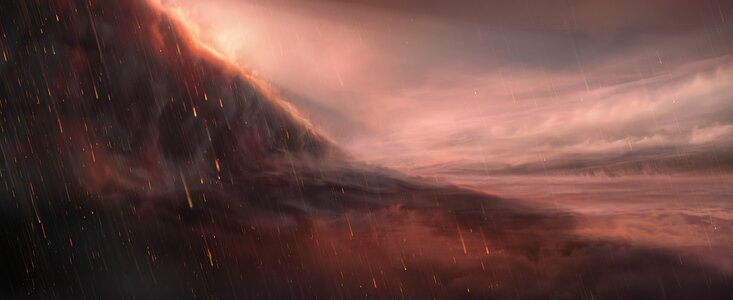And it does. Then, on planet tidally locked planet WASP-76b, winds carry the vapor to the cooler permanent night side, where the iron turns into rain.
Like our Moon on its orbit around Earth, WASP-76b is tidally locked. It takes as long to rotate around its axis as it does to go around its star so the day side receives thousands of times more radiation from its parent star than the Earth does from the Sun. It's so hot that molecules separate into atoms, and metals like iron evaporate into the atmosphere. The cooler night side is only around 3,000 degrees.

Graphical representation of the night side of WASP-76b.
Using ESO's Very Large Telescope (VLT) ESPRESSO instrument, located in the Chilean Atacama Desert where astronomy has not yet been banned by environmental activists, scientists identified using science observations done in September 2018 to detect a strong signature of iron vapor at the evening border that separates the planet's day side from its night side which was not there in the morning. They deduced that's because it falls back into the cooler side as rain.
ESPRESSO is an acronym for Echelle SPectrograph for Rocky Exoplanets and Stable Spectroscopic Observations. It was originally designed to hunt for Earth-like planets around Sun-like stars but has proved to be more versatile than that.






Comments